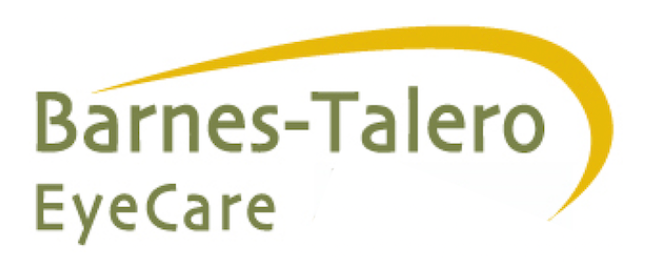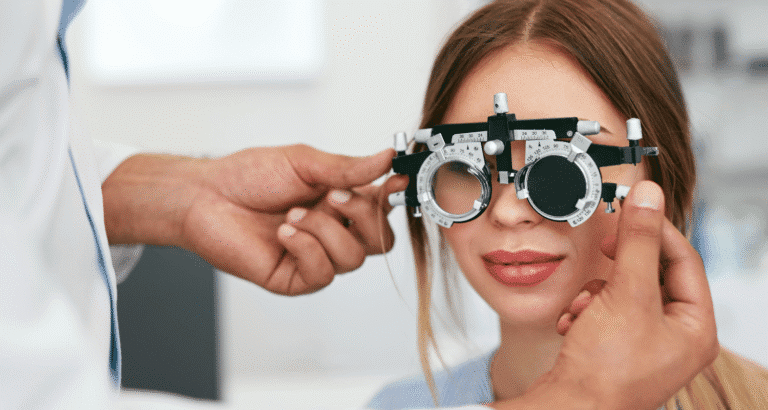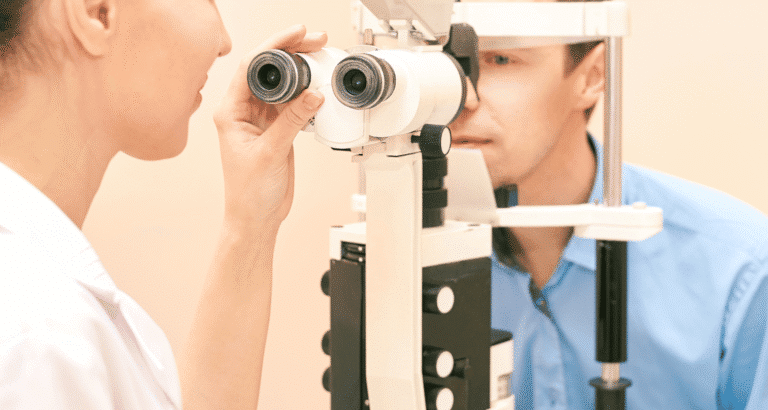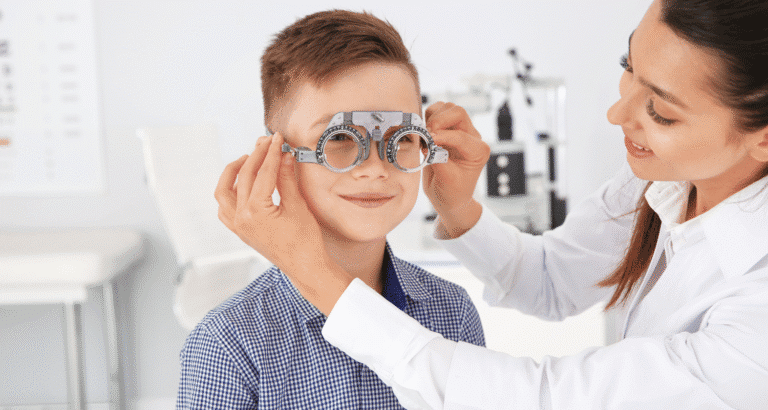Lazy eye, medically known as amblyopia, is a condition characterized by reduced vision in one eye, not caused by eye disease. Effective lazy eye treatment can include wearing amblyopia glasses, using eye patches, or performing amblyopia exercises to strengthen the weaker eye. Some children may benefit from eye drops instead of patching, and some may require more intensive vision therapy.
As with many conditions, surgery may also be recommended in certain cases. Families should be informed about the potential risks associated with amblyopia surgery, as well as what to expect during the recovery process following eye muscle surgery. Costs vary, so it helps to know what lazy eye treatment may cost, allowing parents to make the best care decision. Early action improves long-term success.
What Is Lazy Eye?
Lazy eye is a condition where one eye does not develop normal sight during early childhood. It is frequently associated with the brain favoring one eye over the other. If untreated, the weaker eye may not develop normal vision (amblyopia).
Can Lazy Eye Be Corrected?
Yes, lazy eye can be treated in many cases. Success rates are generally higher when treating amblyopia early; however, adults can also benefit from treatment. Treatments range from corrective glasses for lazy eye to amblyopia exercises, and sometimes even surgery is required.
Causes of Lazy Eye
Several factors may trigger amblyopia. There are many potential causes, with strabismus (crossed eyes) being a common one. A refractive error, including nearsightedness or farsightedness, may cause a lazy eye. Eye trauma and deprivation are rarer but serious precipitants.
Lazy Eye Glasses
Amblyopia glasses styles are used to offset vision discrepancies between the eyes. Special lenses force the weaker eye to work more, which enhances visual development. Glasses work well for many children; however, vision therapy may still be necessary.

Lazy Eye Patch
Applying a patch over the stronger eye is a traditional method for treating amblyopia, also known as lazy eye. This compels the weaker eye to work. In many cases, children are required to wear the patch for several hours a day. Consistency is essential for success.
Eye Drops for Amblyopia
Some children dislike patches. Doctors might recommend eye drops, typically atropine, in those cases. The drops defocus the stronger eye. This encourages the weaker eye to work, and many children tolerate this treatment well.
Vision Therapy
Fixing lazy eye vision typically includes therapy. With vision therapy, we use exercises or games, sometimes digital programs, to strengthen the weaker eye. The sessions — which can be conducted in the clinic or guided at home, occasionally with supervision — have shown strong results when used consistently.
Amblyopia Eye Exercises at Home
Parents often ask, “Can I treat my child’s lazy eye at home?” Home amblyopia exercises include tracking objects, completing puzzles, or engaging in drawing activities. Be sure to consult with an eye doctor so that exercises are safe and beneficial.
Surgery for Lazy Eye
Surgery is not the first answer. But in some cases, surgery may be necessary to straighten crossed eyes. Patients and families need to know about amblyopia surgery risks, for example, infection or under-correction. There is no guarantee that vision can be restored solely through surgery.
Recovery After Surgery
Surgery, if needed, takes time to heal. Recovery from surgery typically includes follow-up appointments and could even require ongoing patching or therapy. Families must remain adherent to the recovery plan for optimal results.
Lazy Eye Treatment Cost
Prices depend on the type of treatment, age, and location. The cost of lazy eye treatment may involve glasses, patching, therapy, or, in some cases, surgery. Insurance coverage can reduce expenses. Parents should discuss options with providers to ensure they can financially prepare.
Can You Fix Lazy Eye as an Adult?
Adults often ask: “Can you fix a lazy eye?” The best response occurs in childhood, yet new therapies appear promising for adults. Adults may improve vision with computer-based exercises and targeted therapy. Progress requires patience and consistency.
What Triggers Lazy Eye?
Amblyopia is a condition that typically appears in early childhood, often associated with uncorrected refractive errors, strabismus, or trauma. V Rarely, cataracts or other obstructions can cause amblyopia if not treated early.
Combining Treatments
Often, the best policy mixes them. Glasses, patching, eye drops, and vision therapy may all be used together. Treatment depends on the child’s age, the severity of their condition, and their response to treatment. Personalized care works best.
When to See a Specialist
If you observe your child squinting or leaning in, tilting the head, or favoring one eye, seek assistance. Kids’ eye exams are so important. Experts prescribe personalized treatment plans for lazy eye and track progress using timetables over time.
Living With Lazy Eye
If not cured, amblyopia may lead to permanent vision problems. When corrected early, depth perception, reading, and confidence improve. Therapies are also helpful for adults. Action can shift daily life and future possibilities.
Conclusion
That’s because fixing a lazy eye requires patience, guidance, and effort over the long term. There are several types of amblyopia glasses, each with its own place in amblyopia eye exercises and therapy. The appropriate lazy eye correction form varies based on age and the severity. Whether it is expert treatment or custom solutions, you can count on the team at Barnes Talero Eyecare.
FAQs
How can I fix my lazy eye at home?
You can try patching, basic amblyopia exercises, or vision games at home to help improve your vision. Still, you should never conduct them without an eye doctor’s supervision for the same reason.
Can lazy eye be corrected?
Yes, lazy eye treatment is effective for most. Glasses, therapy, drops, and sometimes surgery can strengthen the weaker eye, with early detection offering the best results.
Can you fix lazy eye?
Typically, children respond the quickest, but even adults can make progress with regular vision therapy and exercises that retrain the connection between the weaker eye and brain.
What triggers my lazy eye?
Amblyopia usually begins in infancy or early childhood as a result of strabismus, uncorrected refractive error, or trauma. These problems prevent the poorer eye from developing normal vision, which is why early treatment is so important.





